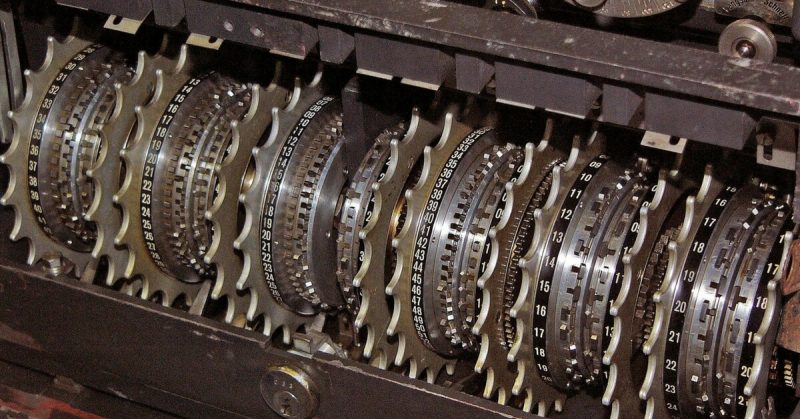May 14th marked the 100th anniversary of William “Bill” Tutte’s birth. Tutte is considered one of the greatest mathematicians and code breakers of the 20th century. He worked during World War II to break the codes used by the Germans at the highest levels of their regime. He also was instrumental in the development of a special electronic code-breaking computer. He is credited with shortening World War II, thereby saving innumerable lives.
Tutte died in Canada in 2002 at the age of 84. After WWII, he contributed to a wide range of mathematics, though few have heard of him or his contributions.
Tutte was born in Newmarket, a town north of London. He was the son of a gardener and a housekeeper.
He was good at his schoolwork and attended Trinity College in Cambridge in 1935. He majored in chemistry.
In school, he made three friends who were mathematics students: Leonard Brooks, Cedric Smith, and Arthur Stone. The four of them began researching mathematics and solving problems.
The four were interested in a recreational puzzle known as Squaring the Square. The idea is to divide a square into smaller squares, each a different size. The prevailing opinion was that it could not be done, but the four friends found a way, using a link to the mathematics of electrical circuits.
The theoretical framework that they developed continues to influence. They published their work in an academic journal in 1940. Tutte was noticed for his work and joined the codebreaking operation at Bletchley Park in 1941.
There were other Cambridge mathematicians already at Bletchley Park, including Alan Turing who had found the key to breaking the Enigma code the German navy used.
Tutte worked on a separate cypher machine which was known as the Lorenz cypher. This code was used by Hitler and the rest of the Nazi High Command.
It was a more complex code than Enigma, and the British knew nothing about how it worked. To make things worse, the British had known everything about Enigma when Turing broke it. They knew nothing about Lorenz when Tutte began working on it.
Tutte had his breakthrough when he was able to analyze intercepted code to find repeated characters which indicated the size of the “wheel” in the machine. But Tutte needed an automated way to attack the code. To accommodate this need, Tommy Flowers led the construction of the Colossus machines.
The Colossus machines are sometimes considered the first computers because they have a lot of the components that we associate with computers today.
So successful were the computers at breaking the Germans’ codes, oftentimes the British were reading the messages at the same time as the intended recipients. This moved the advantage firmly into the Allies’ court, especially for planning the invasion in Normandy.
With the success he experienced helping to solve the Squaring the Square problem, Tutte moved further into mathematics. He turned his attention to the theory of graphs. The graphs that Tutte was interested in are abstract networks which consist of objects known as vertices or nodes and the interactions between them (called edges or links).
A network of train stations and the rails connecting them, or the hyperlinks connecting web pages which make up the World Wide Web are the kind of graphs Tutte was interested in.
One thing Tutte was able to do was to place graph theory among other mathematical objects which had more extensive theories already worked out. In doing so, he was able to show what differentiated graphs from other mathematical constructs like lines and planes.
His new theory of graphs connected them to older and more developed parts of mathematics and gave the subject more depth, The Conversation reported.
Tutte’s legacy started with solving a recreational puzzle, grew into contributing to the overthrow of the Nazi regime and finally gave the world a branch of mathematics that helps us understand the complex networks we live with today.
Over ten years after his death, his hometown in Newmarket raised a monument in his honor.
